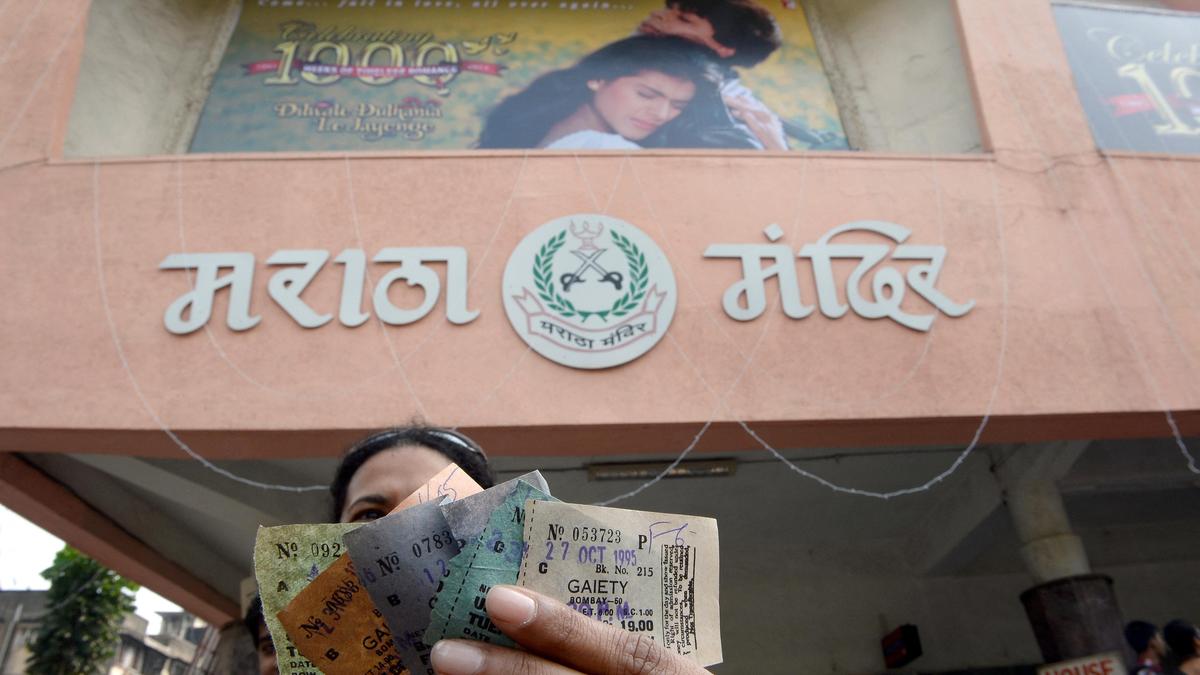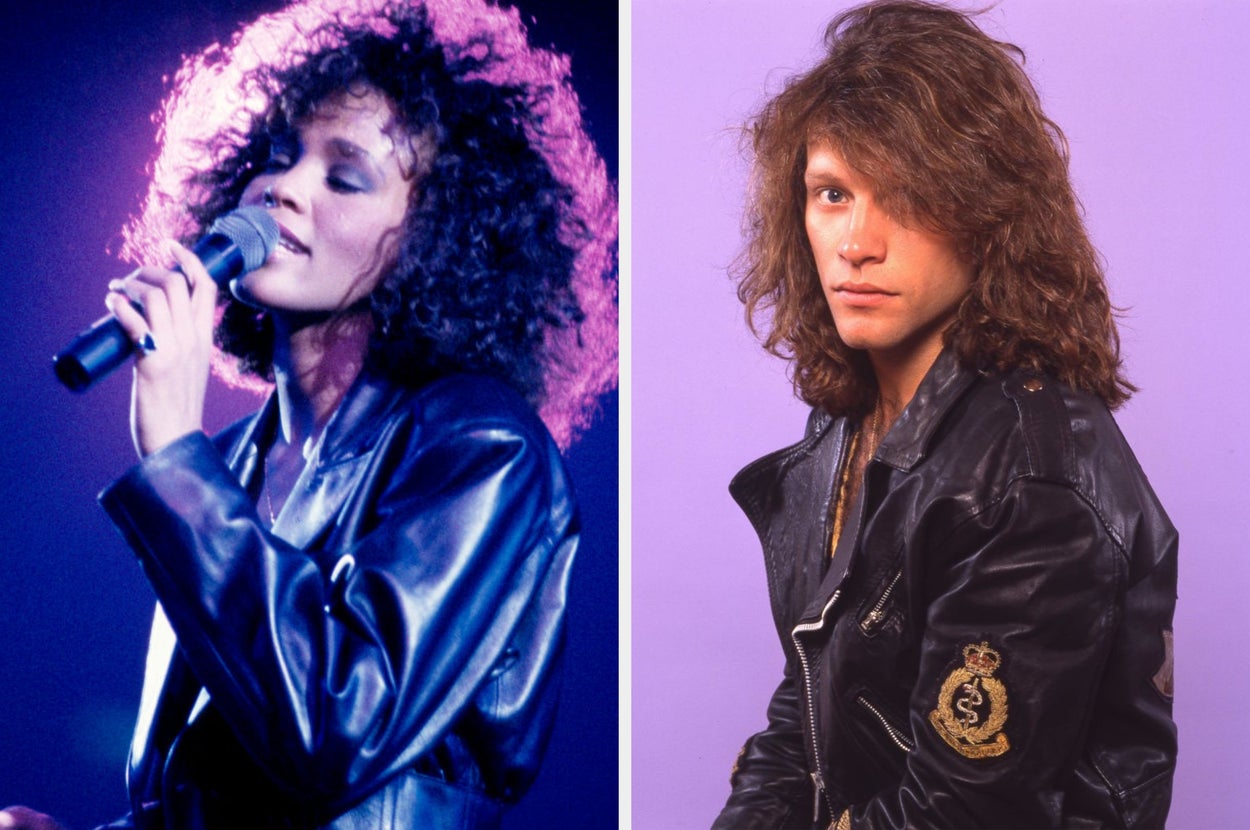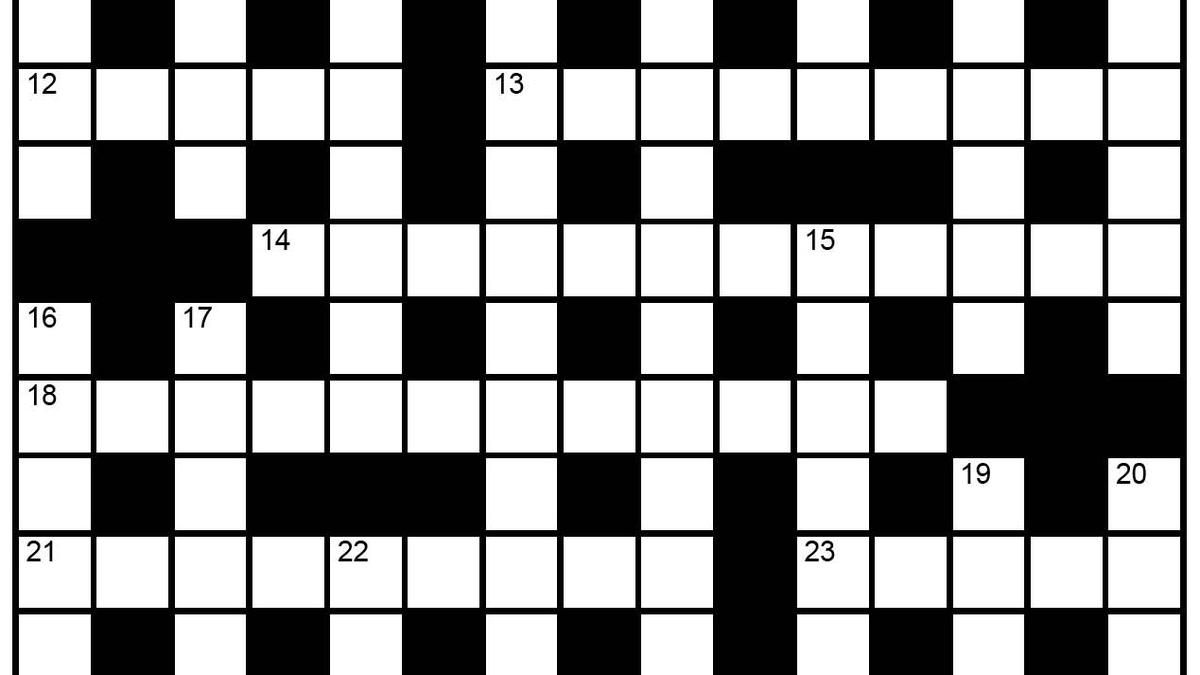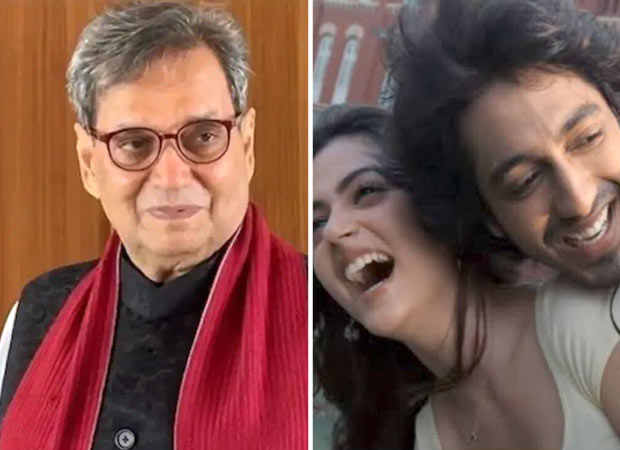October, 1995.
I was 18, starting out as a film writer, when I first watched and reviewed Aditya Chopra’s Dilwale Dulhaniya Le Jayenge — or DDLJ, as people still call it 30 years later.
As a generation or two grew up with one of the most seminal films of Shah Rukh Khan’s filmography, our thoughts on the film too have evolved and changed with the times. So, a trip to Maratha Mandir, where DDLJ continues to play every day for the last 30 years (barring the pandemic shutdown) at its sole 11.30 am show, was nothing short of time travel.
For ₹50, you get a balcony seat — and yes, about 200 of those were occupied that day. It is a common practice to let the audience fill the balcony so the auditorium looks full.
Maratha Mandir itself feels frozen in time — a relic from 1958 near Mumbai Central renovated recently with fresh lighting, where my film critic friend observed that some patrons drop by less for the nostalgia and more for the air-conditioning. The place, with its cheap tickets doubles up as a kind of informal waiting room — people chatting on phones, occasionally glancing up at the screen annoying regular fans who have made trips across the city or country for their bucket list.
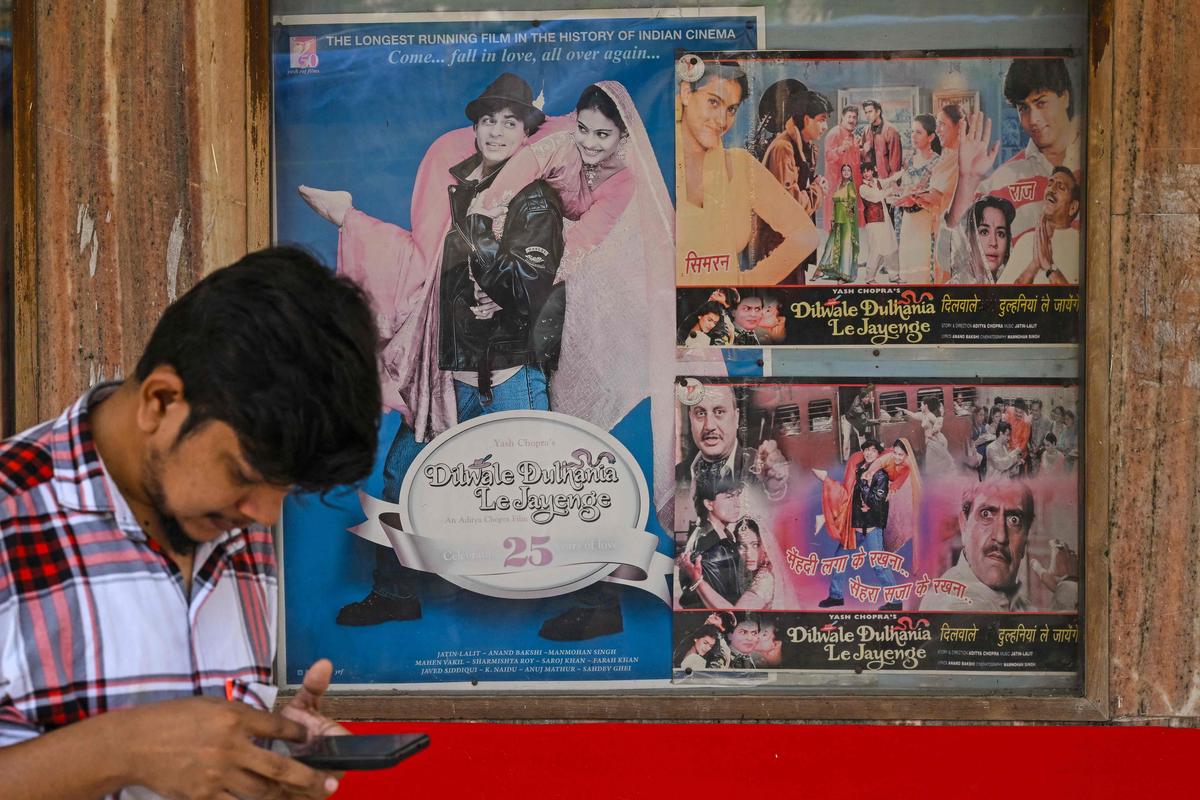
A moviegoer at Maratha Mandir
| Photo Credit:
INDRANIL MUKHERJEE
Love letter to Patriarchy
“This is London… Nobody knows me except pigeons,” the film begins with the voiceover of the patriarch (Amrish Puri), who misses his Punjab and longs to fly back home. “Roti paanv ki zanjeer ban gayi hai” (Bread has shackled my feet), he laments, feeding the pigeons.
Those were simpler times before the anti-pigeon propaganda. Today, Mumbai reminds citizens not to feed the harbingers of disease and producers of toxic droppings. We have othered the pigeons.
The almost full balcony on the day after Deepavali erupted into applause when the opening credits introduced Shah Rukh Khan as Raj and Kajol as Simran — as if the makers knew how these characters would become household names.
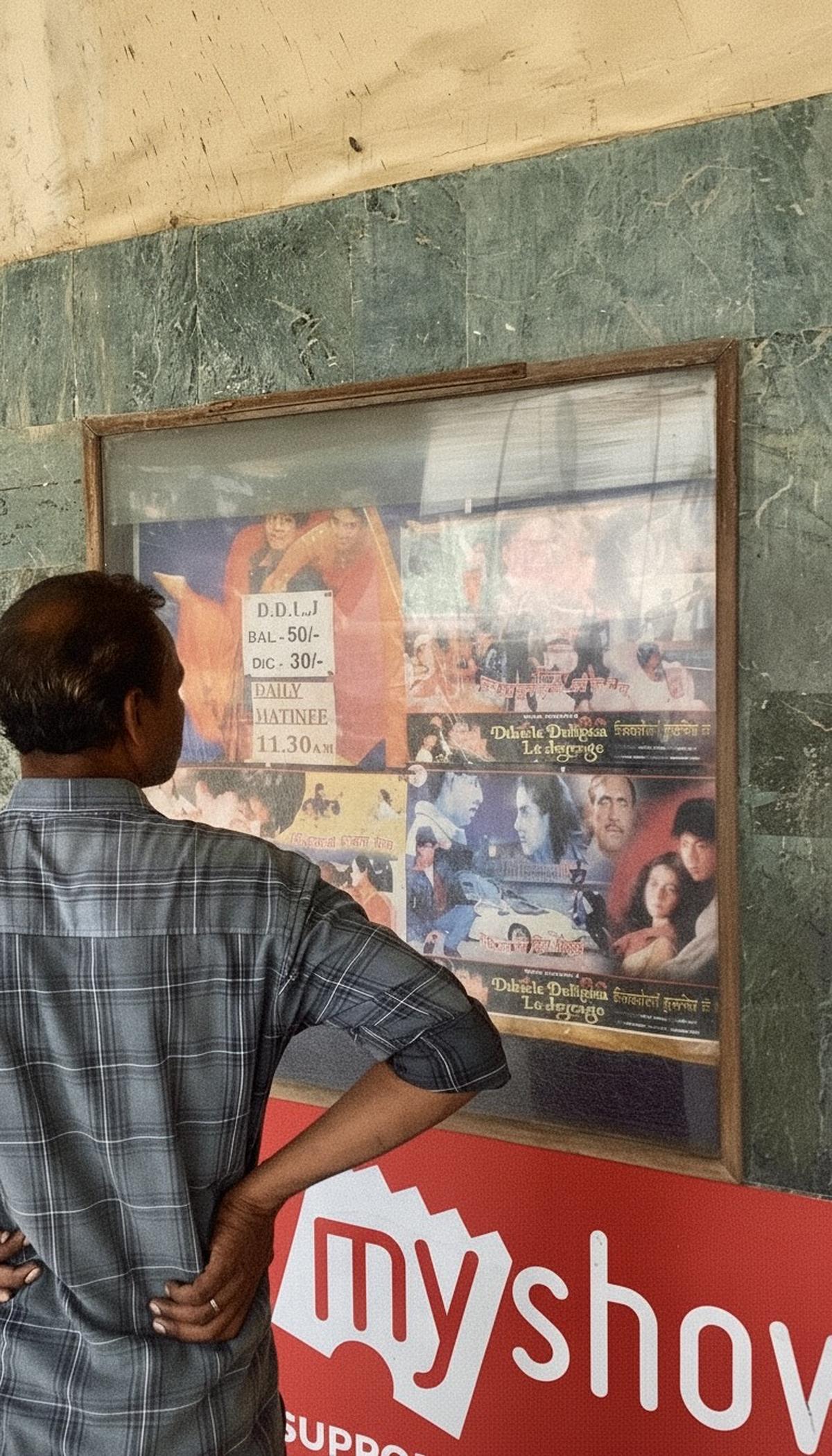
A visitor at Maratha Mandir
| Photo Credit:
Special Arrangement
While debut director Aditya Chopra’s generation saw it as a desi Before Sunrise (1995), featuring Raj and Simran falling in love on a Eurail route, father Yash Chopra’s generation saw it as a tale of two NRI fathers played by traditional Amrish Puri and liberal Anupam Kher.
One believes the daughter should get used to her tears and pick herself up, or in the words of the mother played by Farida Jalal, “had no right to dream.” And the other wants his son to go live his youth as well if he feels he has missed out on it — a youth that flew by as he tried to make a living.

This could very well be every Indian parent in the 1990s — with different rules for sons and daughters — but here was a film that was going to start an important conversation and inspire generations of filmmakers to subvert it.
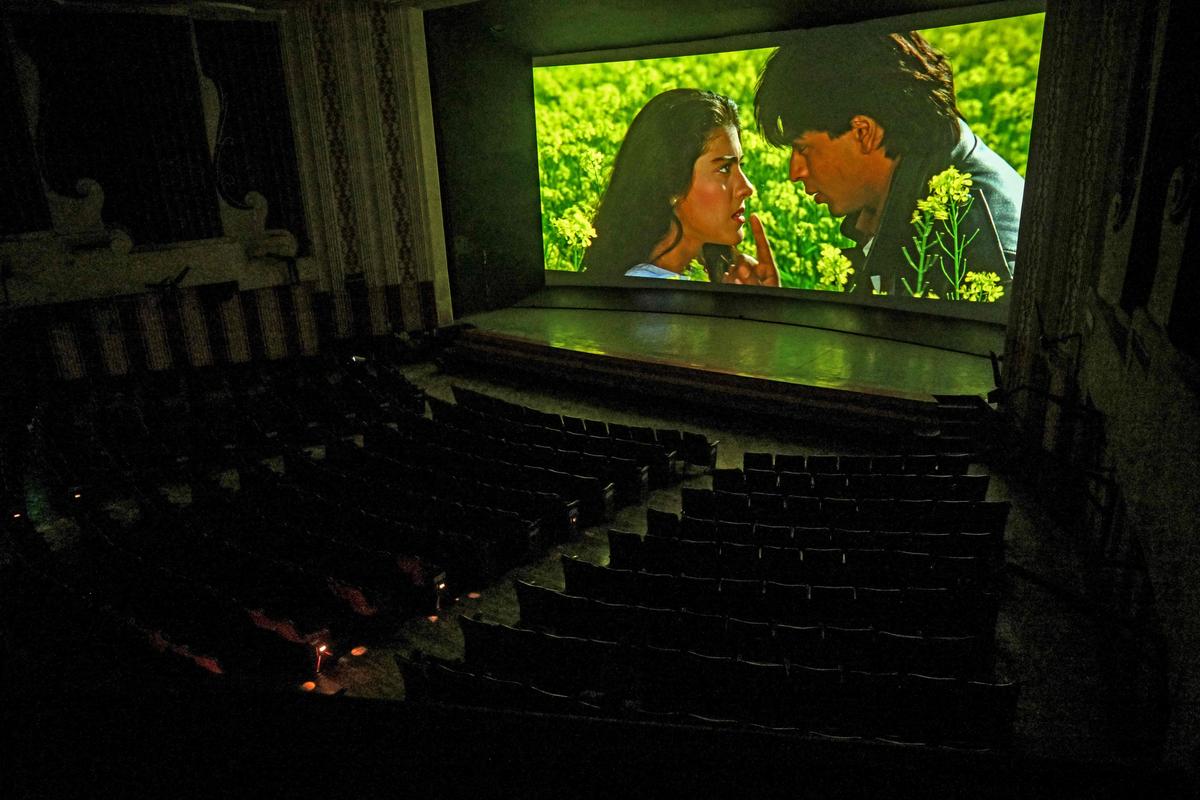
An iconic scene is seen during the screening of Dilwale Dulhania Le Jayenge at Maratha Mandir
| Photo Credit:
AFP
Karan Johar, who plays the hero’s best friend in DDLJ, went on to produce the Dulhaniya franchise with Varun Dhawan and Alia Bhatt, where the girl called the shots and the boy had to develop a spine. Luv Ranjan went one step further by showing the ugly side of what really happens in an arranged marriage setup, even if the boy is IIT/IIM educated. Themes of marital rape in Akaash Vani disturbed audiences as many walked out of halls halfway. More recently, Aryan Khan in The Bads of Bollywood roasts the hypocrisy of the patriarch in his love letter to his father.
The true test of a film is to see when the audience claps hardest 30 years later. Of course, they still clap for Shah Rukh Khan in his shorts, running with that oval rugby ball in the rain, or when Kajol gets drunk and starts dancing to ‘Zara Sa Jhoom Loon Main’ — but the biggest cheers in the first half came for Shah Rukh bursting into ‘Ruk Ja O Dil Deewane’ — storytelling via choreography by Farah Khan — the chemistry that later created Main Hoon Na, Om Shanti Om and Happy New Year. The other songs were by Saroj Khan. So yeah, the times were changing.
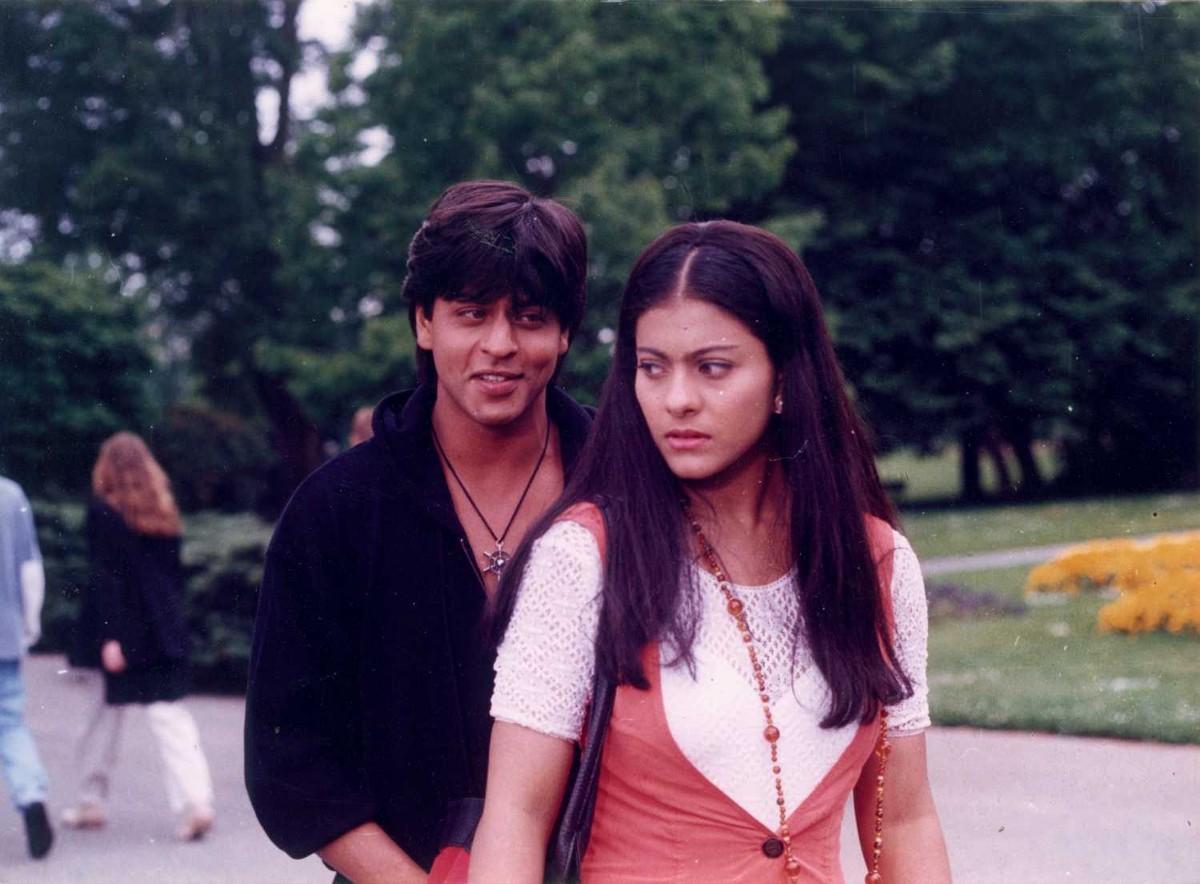
A still from the film
| Photo Credit:
Special Arrangement
The most unexpected applause was towards the end of ‘Ho Gaya Hai Tujhko’ when Simran waves at an imaginary Raj, and again when, outside House No. 13, Raj finds out Simran and family have left London — but then he finds the Swiss cowbell, bringing in the whistles at intermission. The beauty of the film is how well it contrasts and balances the two sides of Indians — Indians on their bohemian European holiday and Indians at weddings — the modern and the traditional.
And the ugly side of DDLJ — the last 15 minutes — still feels as cringe as it did 30 years ago. Simran is not the father’s ‘amanat’ to give away, and doing the basic decent thing a father ought to do, considering a daughter’s happiness, should not be the generous, applause-worthy gesture it’s treated as. Yet “Ja Simran… Jee Le Apni Zindagi” still gets the audience cheering.
A still from the film
| Photo Credit:
Special Arrangement
Maybe we think so little of traditional minds that we want to applaud acts of basic decency. Yes, times have changed, romance has changed — but as the liberal father tells his son: “Mohabbat ka naam aaj bhi mohabbat hai.” Never mind situationships, love is still called love, indeed.
Published – October 24, 2025 04:04 pm IST
